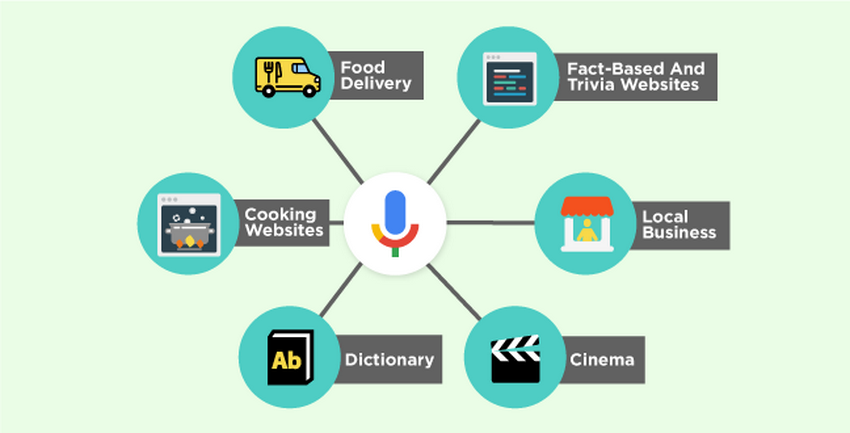In the ever-changing digital landscape, Google is a friend we all turn to for all our queries. From searching for a doctor nearby to getting answers to our problems, we chat directly with Google, even without realizing it. But Google is made of algorithms, and algorithms are not people. Advancements in technology made it feasible for algorithms to accurately understand slang, language expression, meaning of different words, and synonyms to deliver the right search query. But, have you ever wondered how Google differentiates ‘business relation’ with ‘correlation’ when both have the word ‘relation’ in common? That’s where natural language processing (NLP) comes into the picture. And, this is what gave birth to the concept of BERT and now SMITH! Using these algorithms, Google displays the top stories and features snippets every time you hit the search button. Let’s understand what SMITH is, why it has become the new buzzword, how it differs from its elder brother (BERT), and what SEO experts can do to improve their SERP results with SMITH in town!
Decoding SMITH
According to Google, SMITH stands for Siamese Multi-depth Transformer-based Hierarchical Encoder. Sounds alien? Don’t worry because you don’t have to remember the full-form; no one does! In simple terms, SMITH is the brainchild of Google’s never-ending quest to provide the best and relevant search results. 
It achieves what Bidirectional Encoder Representations from Transformers (BERT) couldn’t achieve – it compares sentences before, after, and even away from the passage to improve the search results. SMITH tries to comprehend the entire document and can accurately predict what the next sentence can be. It helps Google puzzle out blocks of sentences, passages, long-form documents, and content – thereby ensuring Google fetches quality search results.
Features of SMITH
- Improves recommendation of news, articles, and document clustering
- It gives importance to information architecture
- Helps with long-tail queries
- Functions as a text-predictor
- Works in conjugation with BERT
How SMITH Works?
Let’s understand how SMITH works and helps in fetching the best results. As artificial intelligence is the backbone of the NLP programs, the first step involves algorithm pre-training on specific data set.
For example, if you feed the algorithm with an idiom, “Once in a blue____.” The algorithm is trained to understand that the word ‘moon’ comes next. When you repeat the above process numerous times with different phrases and sentences, the algorithm becomes smart and predicts the right words. Here, the word ‘moon’ is masked. But, what happens when a user masks an entire sentence from a block of content? How will Google ensure the accuracy of the search results? That’s what SMITH handles! It helps Google unmask the sentence prediction. But, how is it different from its elder brother BERT? Read on to understand
SMITH Vs. BERT – Two sides of the same coin
Though in 2019, BERT was the talk of the tinsel town due to its breakthrough search capabilities, it had some limitations. From understanding long-form paperwork to handling larger input text – the search results were tremendous but restricted to the algorithm’s ability to unmask only words instead of sentences. Enter SMITH. Though SMITH is not live yet, it outperforms BERT by a whopping 400% – a mindboggling statistic, which could change the landscape of search results.
Pre-training
SMITH: The model was trained using the masked sentence block language modeling task.
BERT: The model was trained using the masked word language modeling task.
The change in the training model made all the difference as SMITH can identify the next paragraphs and block of text in a long-form document.
Understanding long and complicated documents
SMITH: It’s capable of understanding and processing complex documents and queries
BERT: Its use is limited to short sentences.
SMITH was trained to overcome BERT’s shortcomings and inability to understand and process long-form queries and complex documents. In the coming years, SMITH is likely to throw light on why the quality of links is necessary for search results and enhance the understanding of content pages related to one another.
Input text length
SMITH: Maximum input text length is 2048
BERT: Maximum input text length is 512
As SMITH is more efficient with longer documents, it’s likely to change how Google displays the search results.
Cost
SMITH: Splits 2,248 tokens for every document
BERT: Splits 256 tokens for every document
The text requires more speed and memory optimization capability of the NLP algorithm for processing eight times. Building a connection between a few words in a sentence is easier for the algorithm to remember than long-form content. As a result, SMITH is likely to be way more costly than BERT in performing complex jobs. But less expensive than BERT when performing the same job. So, will BERT fall prey to digital Darwinism or work in conjugation with BERT? BERT is the building block of SMITH and will help the new algorithm understand and process short queries.
How SMITH will impact SEO experts and web designer
Even with uncertainty hovering around the launch of SMITH – Google is likely to release it in the coming months. And, when this happens, it’s likely to bring a paradigm shift in the way Google ranks the webpages. To stay abreast with the technological advancement and ensure your efforts yield a higher ranking, follow these four tips for 2021.
1. Focus on user intent
Like BERT, SMITH uses NLP and machine learning (ML) to know what the user is trying to search – making user or search intent the top priority. Search intent is the results that you get when you search something on Google. For example, when searching for a cardiologist in Texas, a user expects Google to show a list of heart doctors in Texas.
With the tech giant now being able to interpret the user intent like a human brain, a content-intent mismatch could jeopardize your business. Whether you’re an SEO expert or a web-designer, it’s imperative to provide results matching the search intention. The rule here is simple, The better your page matches the search intent, = Higher the page will rank.
2. Create long-form content
According to a 2019 report, a content of 3000+ words receives:
- Four times more share
- Three times more traffic
This was before the SMITH era! If long reads had such a significant impact on the SEO strategy, imagine its amplification after Google rolls out SMITH. Long-form content is your goldfish to a successful SEO strategy as it engagingly provides information.
As SMITH checks the content of paragraphs and blocks of sentences, SEO experts should back your website with content that answers the searcher’s specific questions. You can no longer fool this intelligent algorithm by stuffing keywords in your long-form content. The need of the hour is to create quality content that follows the Expertise, Authoritativeness, and Trustworthiness (EAT) principle of Google. The EAT helps Google decide the usefulness of the content on a website for the searcher. If your content cannot provide what your customer is looking for, it’s not SMITH friendly and will not rank for that keyword. That’s why sharing and publishing high-quality long-form content is no longer an option.
3. Use content formatting or structuring
With SMITH capable of searching long queries, using header tags such as H1, H2, H3, etc., would only help the algorithm match the user intent with your content. Furthermore, header tags break up the text into small paragraphs, lending a helping hand to the SMITH algorithms. For example, the absence of a single H1 tag ensures that Google misses out on your web page’s key theme. When you use more than the H1 tag in your content, it confuses the algorithm as it cannot interpret which H1 is of prime importance. Having a single H1 in your webpage or long-form content could be the difference between failure and success. Structured data provides an additional description to your webpage on the SERP in the form of reviews and ratings. This helps Google crawler’s index website more comprehensively and ensures a perfect match between the search intent and content.
4. Give importance to voice search technology
 With 55% of U.S. households likely to own a smart speaker by 2022 and 27% of the global population using voice search on mobile – voice search technology could change the SEO game in the SMITH era. From Apple’s Siri to Amazon’s Alexa, your digital customers use voice searches to search on Google. Interestingly, a majority of the voice search queries are long-tail. For example, a user is likely to say, “What are the best digital marketing strategies for 2021?” using a voice search. Your customer may limit it to “best digital marketing strategies 2021” when typing. As voice searches best perform with long-form phrases, you need to identify these phrases to attract organic web traffic. With SMITH capable of processing long-form queries, voice search is likely to help you rank better in the SERP.
With 55% of U.S. households likely to own a smart speaker by 2022 and 27% of the global population using voice search on mobile – voice search technology could change the SEO game in the SMITH era. From Apple’s Siri to Amazon’s Alexa, your digital customers use voice searches to search on Google. Interestingly, a majority of the voice search queries are long-tail. For example, a user is likely to say, “What are the best digital marketing strategies for 2021?” using a voice search. Your customer may limit it to “best digital marketing strategies 2021” when typing. As voice searches best perform with long-form phrases, you need to identify these phrases to attract organic web traffic. With SMITH capable of processing long-form queries, voice search is likely to help you rank better in the SERP.
Conclusion
The mantra for 2021: Focus on long-form content, focus on providing meaningful and high-quality content. If you’re still planning to optimize content for keyword and Meta titles, you’re probably living in the dinosaur age. With current trends, SEO is only going to get more complex. A business that keeps track of these changes is the one that ranks higher on the SERP. The degree to which Google decides to implement SMITH remains to be seen, but websites delivering high-quality content are the ones that are likely to reap benefits from the change.

